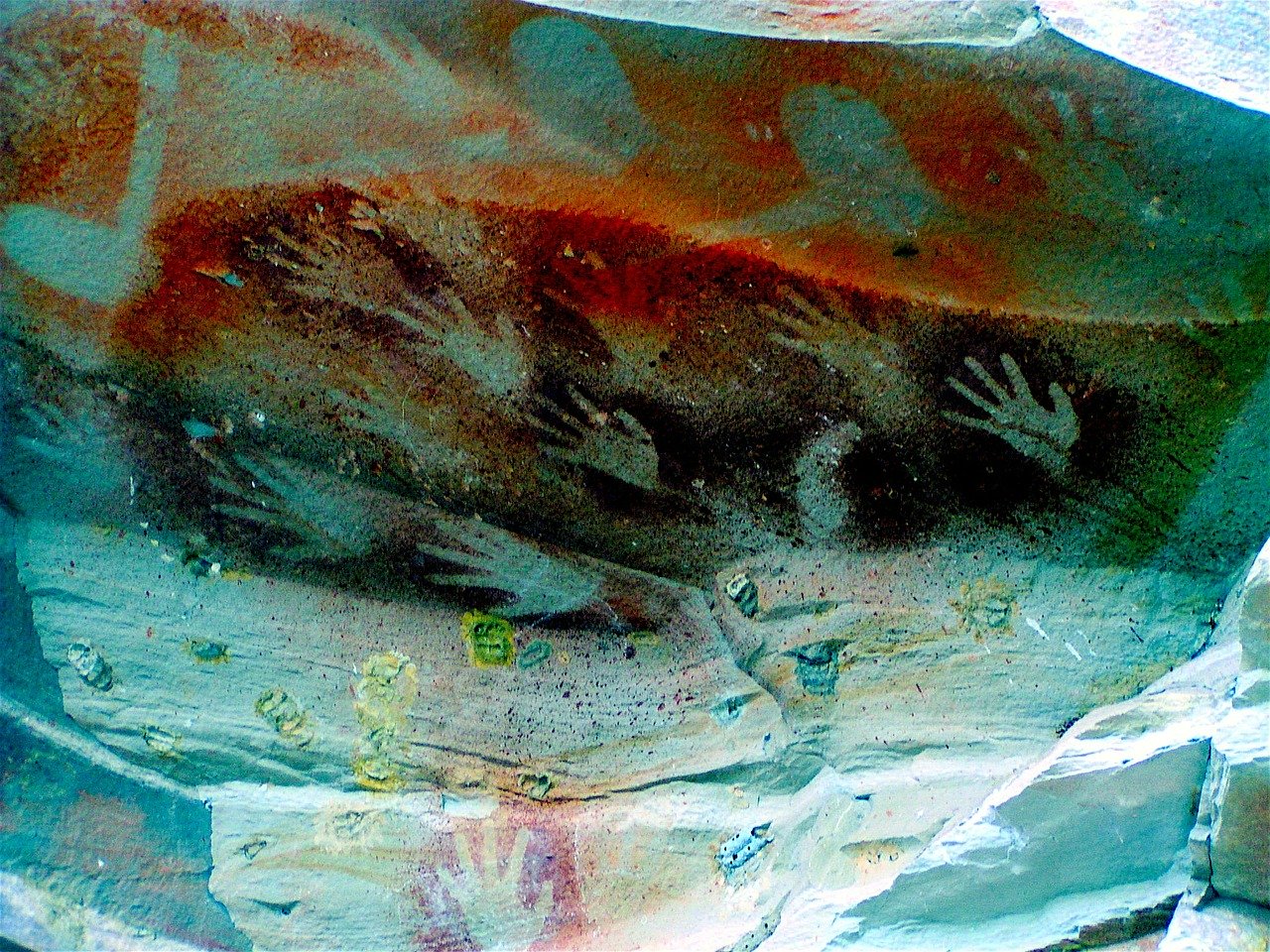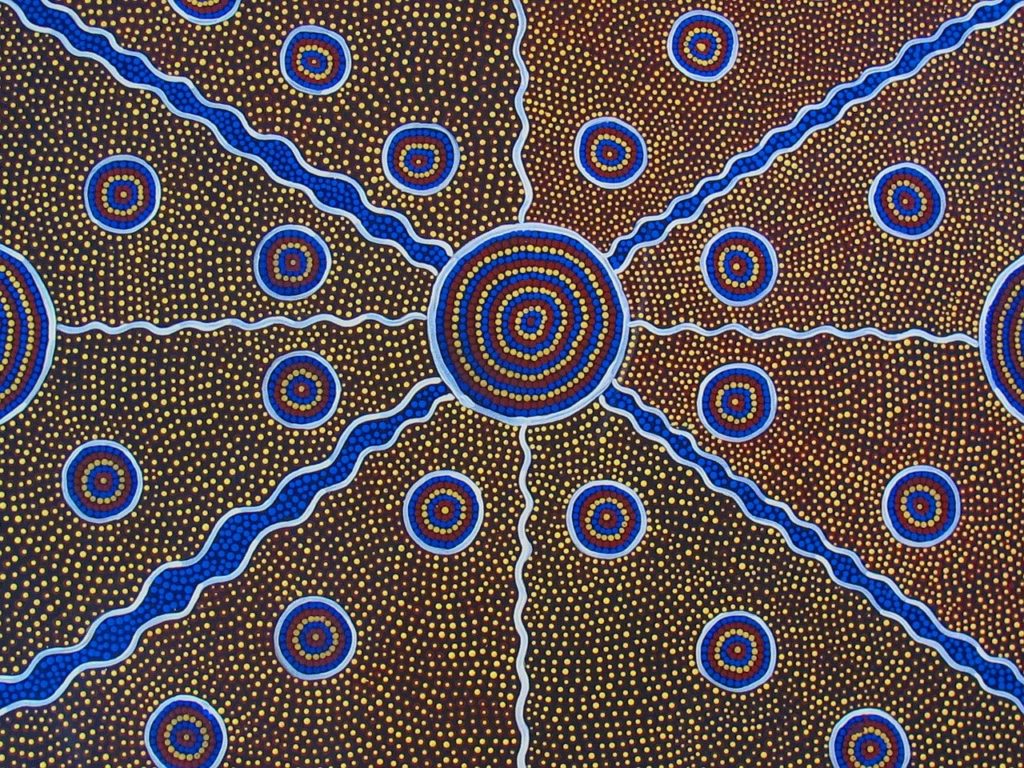Among the classic forms of artistic expressions in the world, Aboriginal art is the oldest. They are also referred to as indigenous Australian art. They are made by Aboriginal Australians, who were the various Indigenous people of the Australian mainland.
You will see an artwork on the museum roof of the Musee du Quai Branly when you visit the Eiffel Tower in Paris. That is an example of Aboriginal Art, which is a work by Lena Nyadbi, an Australian Aboriginal artist. This artwork symbolizes the level of international respect that has achieved by the contemporary Australian Aboriginal art movement.
If you are into Aboriginal art, have you ever wondered how it began? If you want to learn more about Aboriginal art, then you’re in the right place. Today, we are going to tell you about the amazing history of Aboriginal art.
History of Aboriginal Art
The Aboriginal culture can be dated as far back as 80,000 years when the Aborigine first settled in Australia, long before European settlers or any Australia day controversy. In fact, the first evidence of Aboriginal philosophy is evident in the still visible rock art dating back to over 20,000 years. They used ochres to paint on rocks, and archaeologists were able to date remains and findings as far back as 40,000 to 60,000 years when they discovered primal campsites.
Aboriginal People in Australia do not have any written language. To convey their important cultural stories through the generations, they are portrayed by icons and symbols through the different artwork they made. It is impervious to pass on information for them to preserve their culture. Storytelling is the center of indigenous art, and it is used as a chronicle to convey knowledge of the land and the traditions and beliefs of the Aboriginal people.
Symbols are used as an alternative to writing down stories of cultural significance, teaching survival, and land use. This means that the interpretations of these symbols and icons differ depending on the audience or who will see them.
When these stories were being told to children, they used a simple form of highlighting the educational and behavioral aspects. And there can be a blend of information and moral teachings behind the stories. They taught children right from wrong, including the consequences of good and bad behavior. However, when taught to elders, these stories would be interpreted at a very different and higher-level form.
Aside from painting on rocks, Australian Aboriginals have also been using ochres as body paint for tens of thousands of years. But this changed in the 1930s when the first paintings were done. The first paintings were not painted out of ochre, but in watercolor at the Hermannsburg Mission near Alice Springs. These paintings featured desert landscapes. In 1937, the first exhibition was held in Adelaide, organized by Albert Namatjira, the most famous of the first Aboriginal watercolor painters.
Aboriginal artists mainly used watercolors up until the early 1970s. But ochre and bark paintings were still available during that time, and they were starting to become available to non-indigenous admirers as well. In 1948, an art and craft center was founded. You can also check out www.aboriginal-art-australia.com for more information.
Today, the artwork we see are on canvas and board, but traditionally, paintings by Aboriginals were drawn on rock walls, ceremonial articles, as body paint, and most popularly drawn in dirt or sand together with stories and songs.
A school teacher named Geoffrey Bardon worked with Aboriginal children in Papunya in 1971. There, he noticed that Aboriginal men would draw symbols in the san as they tell stories. This is the reason why he encouraged them to paint these stories onto board and canvas. With this, the famous Aboriginal art movement began. This movement was a major jump for indigenous people to begin painting their stories onto western facades, which was a very foreign concept.
Australian Aboriginal Art has been identified as the most exciting contemporary art form of the 20th century. With this, when painting particular stories, Aboriginal Artists would need permission to do so. They inherit the rights to these stories and are passed down through generations with certain skin groups. It means that an Aboriginal artist is not allowed to paint a story that does not belong to their family.
The heart of Aboriginal culture and Aboriginal art is the Creation Law. This law sets down the Dreaming, which gives the identity for Aboriginal people and their connection to the land. This is called Dreamtime or Jukurrpa and Tingari. It is the translation of the Creation of time for the Aboriginal People. Many Aboriginal Artists paint facets of their Dreaming, forming a share of their identity and inheritance.
When the Aboriginal people became afraid that white men would be able to see and understand their sacred, private knowledge, many believed that dots were used to hide information from them. These dots were used to hide the secret symbols underneath.
Aboriginal art varies in character and style, depending on which region the artist came from, and what language is spoken. There are lots of contemporary art that can be recognized from the community where it was created. One example is the use of ochre paints, which is marked in Arnhem Land and east Kimberley.
The materials and colors used for Aboriginal arts were obtained initially from the local land. Iron clay pigments and ochre were used to produce colors, such as red, black, yellow, and white. Eventually, other colors were added, including sage greens, saltbush mauves, and smokey greys.
More Aboriginal women artists emerged during the mid-1980s. With that, a wider range of modern colors was used, and bright desert paintings were introduced on the market. In many communities, the choice of color continues to be an identifier of style. One example is Papunya Tula, which is part of the western desert art movement, popular for its use of soft earth colors, while many other Western Desert Communities choose strong primary colors. The art styles differ dramatically even within regions, and there’s no strict rule.
One of the very popular styles that were adopted by Aboriginal artists is painting from an aerial view. Lots of artists imagined themselves flying over the land, perceiving the natural and abstract forms or markings of the scenery. It is quite a popular style that has led to some incredible works to be produced.
In May 2007, the first piece of indigenous art was sold for more than $1 million. It was an artwork by Emily Kame Kngwarreye called “Earth’s Creation.” In July of the same year, the work of Clifford Possum Tjapaltjarri called “Warlugulong” map series was able to reach $2.4 million.
Aboriginal Art Today
Today, Aboriginal Art is usually found in both museums and galleries, and it is perhaps the most successful and the longest surviving culture in history. The art reflects the earliest period of this ancient culture, making it special and important. In fact, Contemporary Aboriginal Art has been an incentive for remote Aboriginal communities, as it provides significant income to these indigenous families.
The Aboriginal Art movement has helped strengthen the culture in Aboriginal society through the reinforcement of the values of traditional knowledge, forming the basis of Aboriginal art. In the present time, there is much Aboriginal art being produced by Aboriginal artists in a lot of remote communities around Australia.
Aboriginal art has indeed brought about a revival of their culture in a lot of ways. It has also considerably removed barriers of preconception and misunderstanding on the part of westerners. People’s admiration of Indigenous art and their willingness to pay for it has helped Aboriginal people financially. And most importantly, this gave them respect and greater confidence, as well.
It is amazing to know that the oldest form of artistic expression in the world is still alive today. We hope the information we shared was able to help you further understand Aboriginal Art.


